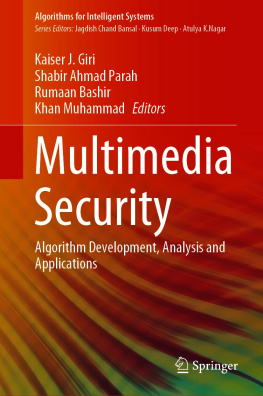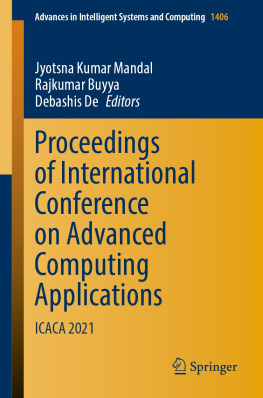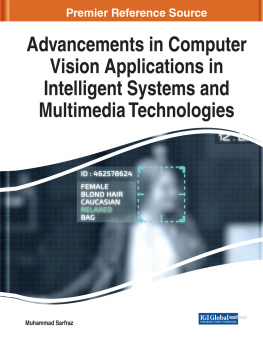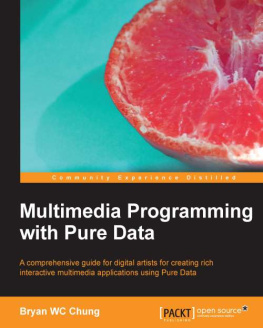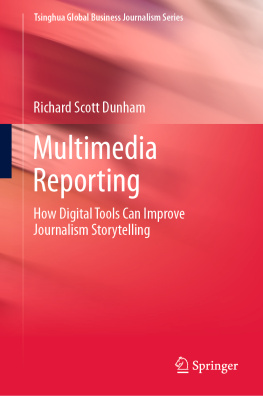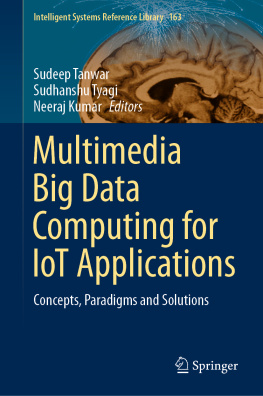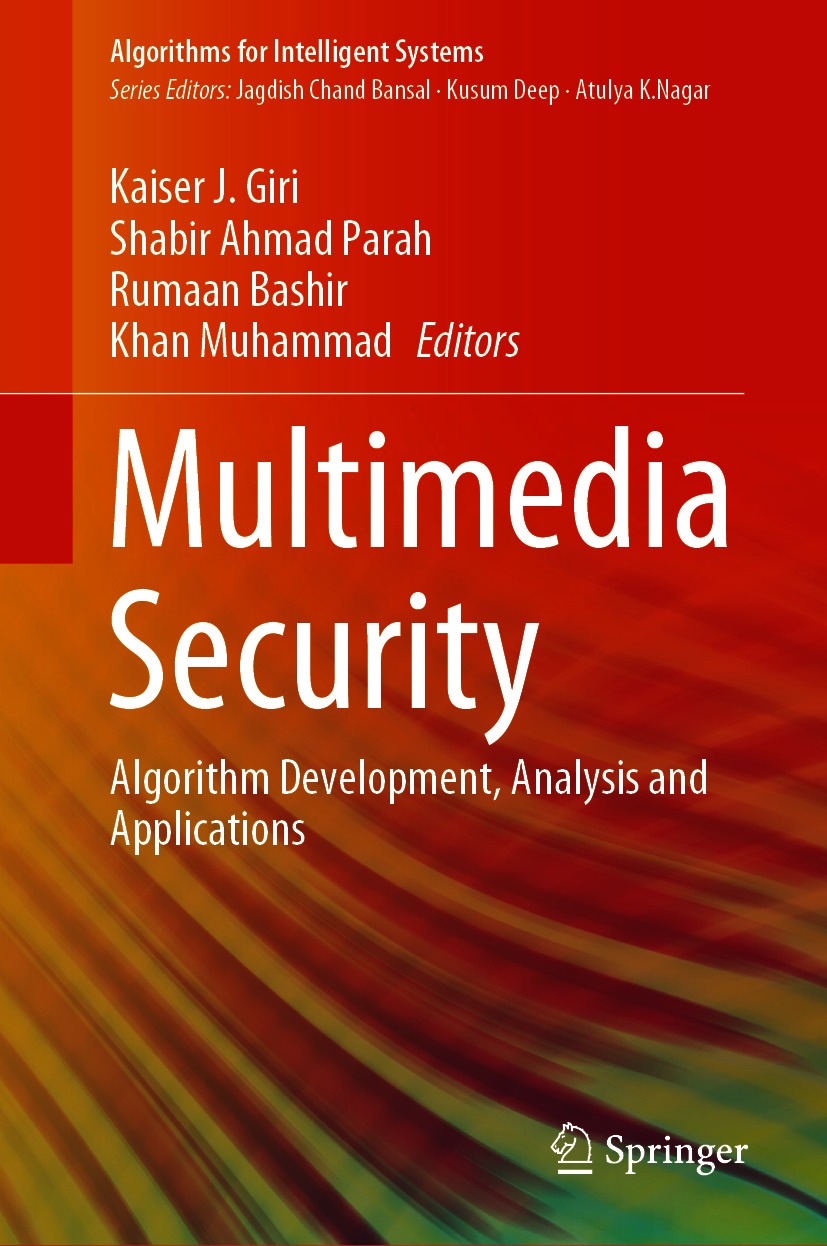Algorithms for Intelligent Systems
Series Editors
Jagdish Chand Bansal
Department of Mathematics, South Asian University, New Delhi, Delhi, India
Kusum Deep
Department of Mathematics, Indian Institute of Technology Roorkee, Roorkee, Uttarakhand, India
Atulya K. Nagar
School of Mathematics, Computer Science and Engineering, Liverpool Hope University, Liverpool, UK
This book series publishes research on the analysis and development of algorithms for intelligent systems with their applications to various real world problems. It covers research related to autonomous agents, multi-agent systems, behavioral modeling, reinforcement learning, game theory, mechanism design, machine learning, meta-heuristic search, optimization, planning and scheduling, artificial neural networks, evolutionary computation, swarm intelligence and other algorithms for intelligent systems.
The book series includes recent advancements, modification and applications of the artificial neural networks, evolutionary computation, swarm intelligence, artificial immune systems, fuzzy system, autonomous and multi agent systems, machine learning and other intelligent systems related areas. The material will be beneficial for the graduate students, post-graduate students as well as the researchers who want a broader view of advances in algorithms for intelligent systems. The contents will also be useful to the researchers from other fields who have no knowledge of the power of intelligent systems, e.g. the researchers in the field of bioinformatics, biochemists, mechanical and chemical engineers, economists, musicians and medical practitioners.
The series publishes monographs, edited volumes, advanced textbooks and selected proceedings.
More information about this series at http://www.springer.com/series/16171
Editors
Kaiser J. Giri , Shabir Ahmad Parah , Rumaan Bashir and Khan Muhammad
Multimedia Security
Algorithm Development, Analysis and Applications
1st ed. 2021

Logo of the publisher
Editors
Kaiser J. Giri
Department of Computer Science, Islamic University of Science and Technology, Pulwama, Jammu and Kashmir, India
Shabir Ahmad Parah
Department of Electronics and Instrumentation Technology, University of Kashmir, Srinagar, Jammu and Kashmir, India
Rumaan Bashir
Department of Computer Science, Islamic University of Science and Technology, Pulwama, Jammu and Kashmir, India
Khan Muhammad
Department of Software, Sejong University, Seoul, Republic of Korea
ISSN 2524-7565 e-ISSN 2524-7573
Algorithms for Intelligent Systems
ISBN 978-981-15-8710-8 e-ISBN 978-981-15-8711-5
https://doi.org/10.1007/978-981-15-8711-5
Springer Nature Singapore Pte Ltd. 2021
This work is subject to copyright. All rights are reserved by the Publisher, whether the whole or part of the material is concerned, specifically the rights of translation, reprinting, reuse of illustrations, recitation, broadcasting, reproduction on microfilms or in any other physical way, and transmission or information storage and retrieval, electronic adaptation, computer software, or by similar or dissimilar methodology now known or hereafter developed.
The use of general descriptive names, registered names, trademarks, service marks, etc. in this publication does not imply, even in the absence of a specific statement, that such names are exempt from the relevant protective laws and regulations and therefore free for general use.
The publisher, the authors and the editors are safe to assume that the advice and information in this book are believed to be true and accurate at the date of publication. Neither the publisher nor the authors or the editors give a warranty, expressed or implied, with respect to the material contained herein or for any errors or omissions that may have been made. The publisher remains neutral with regard to jurisdictional claims in published maps and institutional affiliations.
This Springer imprint is published by the registered company Springer Nature Singapore Pte Ltd.
The registered company address is: 152 Beach Road, #21-01/04 Gateway East, Singapore 189721, Singapore
Preface
The contemporary multimedia communication has converted the world into a global village. The digitization of sensitive multimedia, its storage and transmission over the Internet has increased massively. There is an exponential increase in the use of the Internet for applications in healthcare, commercial, government, and industrial sectors because of improved networked technology and computing power. The advantages of a completely digital system include ease of data management, cost reduction, high speed, and reliability among many others. However, there is a possibility of encountering numerous threats like phishing attacks, malware, ransomware, unauthorized access, and tampering of the digital content. Therefore, it is of utmost importance that digital information is secured and objectives of confidentiality, integrity, availability, authentication, and non-repudiation are fulfilled. One of the most important challenges is to develop algorithms that can protect sensitive data. Sensitive multimedia can include text files, audios, images, and videos. However, images form a large percentage of the transmitted and stored content and therefore need to be secured completely. This book shall serve as a comprehensive reference to multimedia security and copyright protection, and it deliberates on various enabling technologies in the field. It provides a good account of multimedia security, quality metrics that govern security, and algorithm development for multimedia secure transmission.
Multimedia security technologies broadly include cryptography and information hiding. Cryptography transforms data into an observable meaningless form and includes variants like symmetric-key- and asymmetric-key-based algorithms and more recently have included techniques like chaos-based encryption and DNA encryption. The security of the cryptosystem lies in the secrecy of the key and as such requires proper key management techniques. Information hiding methods on the other hand hide the complete existence and possibility of a secret into a cover media and can be divided into major domains like steganography, watermarking, multimedia mining, and digital forensics. Steganography deals with the optimization of algorithms for embedding secret data into cover images such that embedding capacity is increased without affecting the detectability, whereas digital watermarking is concerned with embedding a small number of bits into a document such that it is protected from forgery. The watermark can be robust, fragile, visible, or concealed and is mainly embedded for copyright protection of the data.
This book provides an in-depth explanation of several robust security algorithms aiming to provide confidentiality and authenticity to digital multimedia content. It attempts to include novel research works about several aspects of multimedia security which are generally not much investigated. The book is mainly divided into three main parts. Part I: Security Using Cryptography and Chaotic Theory: Algorithm Development and Analysis

